How to Charcuterie
- Posted on
- By Max
- Posted in charcuterie, cheese, corazon, corazoncollections, ecom, meat, meat and cheese, retail, wood from the hood
- 0
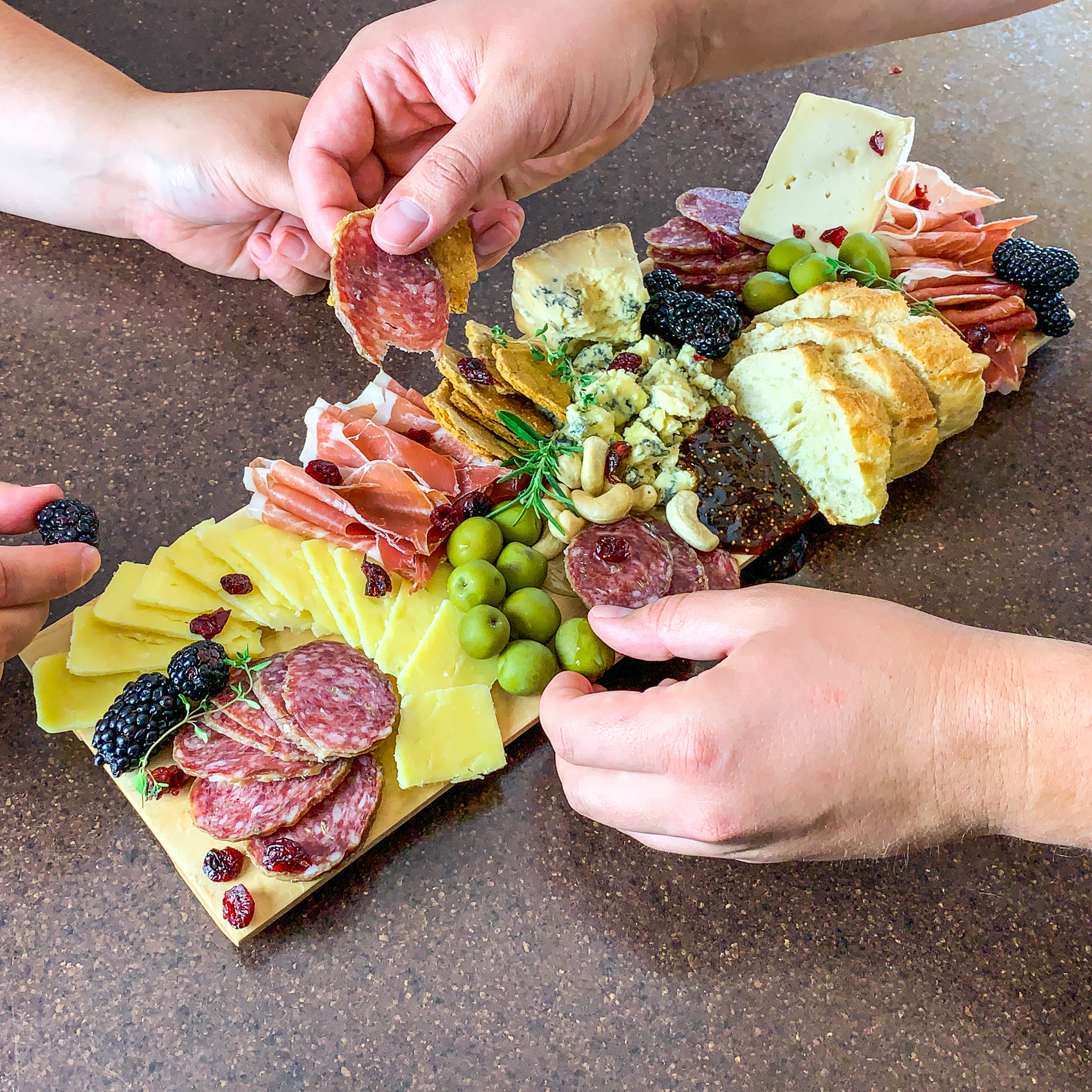
The keys to a killer charcuterie board? Abundance, delicious food, and Wood from the Hood.
How To Charcuterie
The ideal charcuterie board should be bountiful; overflowing with delicious
meats, cheeses, nuts, breads - the presentation needs to trigger the primal
nature of your guests, encouraging intimacy and good vibes.
We are here to help.
The Board
Every charcuterie board starts with two basic building blocks - the board, and the food. It's important to pick the right board for the situation - remember, we want to present bounty and fecundity. Pick a board that you can overfill with delicious bits, sizing it so that you won't waste food.
Here we use a 6x18 board from Wood From the Hood - you can find it in the shop! It's the perfect size for 4-6 people. You need to size the board to the amount of people, no one wants a huge board with two peoples' worth of meat and cheese. So - pick the board for the job.
The Food
Now that we have our board, we need to add the fun stuff. If you are going to take the time to create a meat and cheese board, don't skimp on ingredients. You can get nice ingredients without breaking the bank, especially if you try to support local farms, butchers, and creameries. You will taste the difference, and you can name drop locals in front of all your friends.

The anchors of the board are meats and cheeses. We like to use 2-3 meats and 3-4 cheeses - but know your audience! Some groups are more carnivoric than others. Additionally, there are some great vegan options around town to scale this for the vegan crowd.
We chose two meats - a fennel sopressata and some serrano ham; and three cheeses - a brie from Alemar Cheese company in Minneapolis, as well as a pungent bleu cheese and a sharp cheddar. The important basics are at least two contrasting meats, one hard and dry, one soft and unctuous. The cheese should have some variation as well - a dry sharp cheddar, and a soft creamy brie or goat cheese. Couple these with a nice baguette, and some crackers - I like to up the ante and make my own cheesless cheese-its.
I'll throw the recipe up in a future post.
Building The Board
Anchoring the board with meat and cheese is the most important step in any charcuterie presentation. Spread them out to give guests options, play with slicing cheese or leaving it whole and having guests slice it. The cheese is your oyster. Always leave soft cheeses whole.
Next, make neat piles of meat. A good rule of thumb for the more pliable meats is to make draperies, rather than neat rolls or folds.
This emphasizes the carnal appetite - part of what makes charcuterie so enticing.

Always keep some meat and cheese set aside to fill in the board later - we don't want any blank canvas.
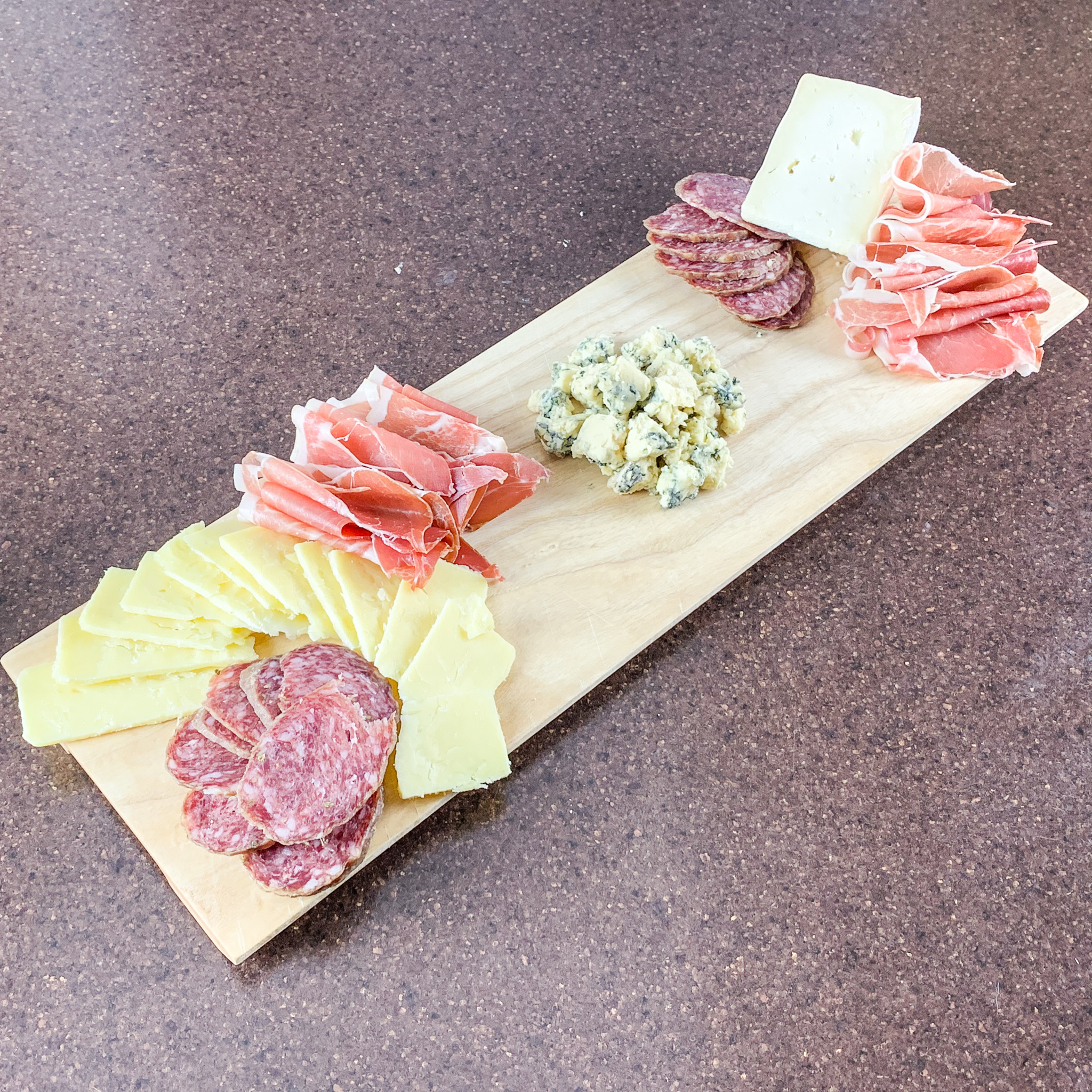
Now we need our bread - we prefer a simple bread, either a baguette or a nice sourdough. Additionally, it's nice having a cracker for something different. Most importantly - think about your flavors. If we have strong flavored ingredients, a simple but robust bread and cracker combo might serve you best. If you want, a more flavorful complex grain may serve your needs.
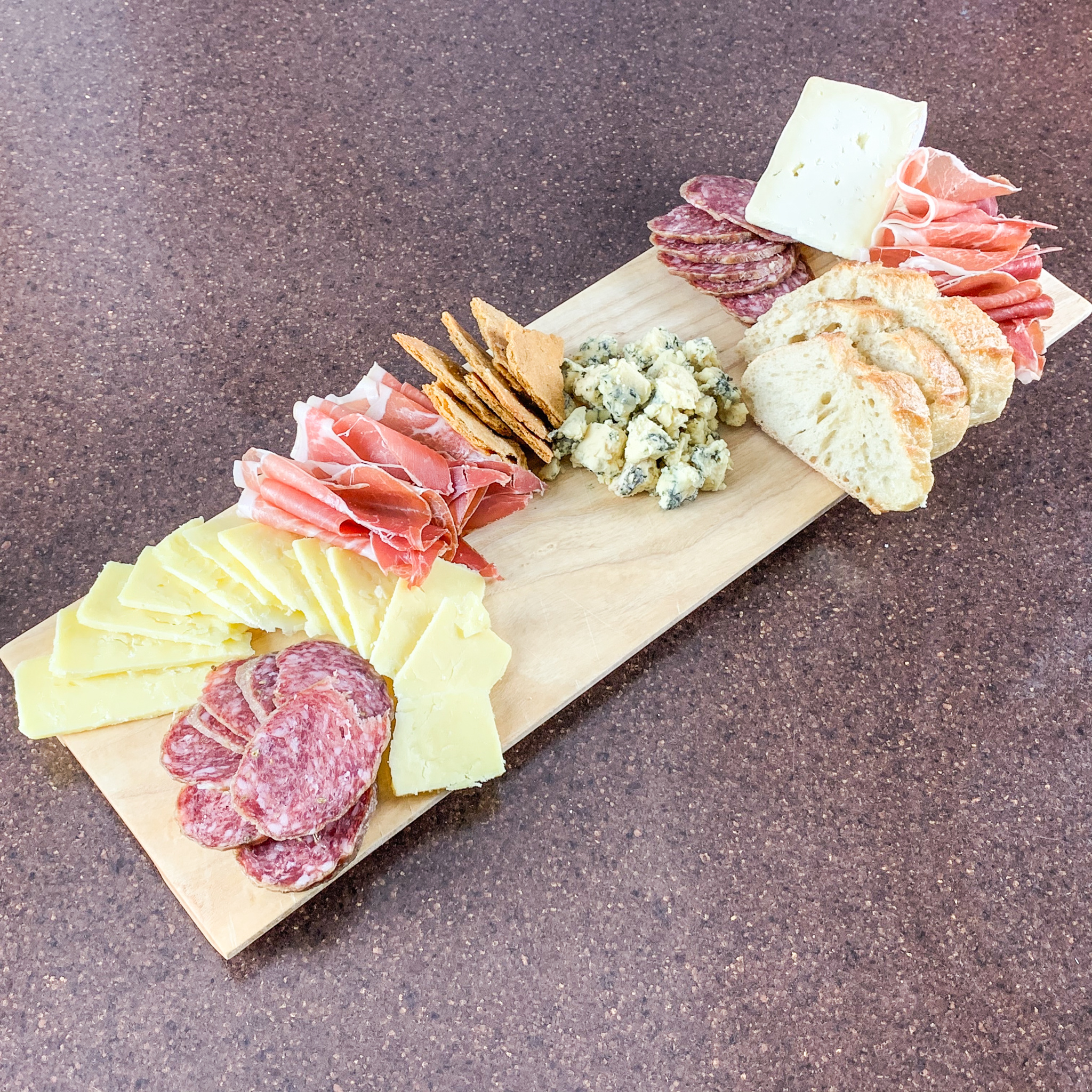
Finally, round out your charcuterie board with the accoutrements.
There are four "itches" these must scratch:
1) something briny - olives; pickles can serve as well
2) something fresh - berries and dried fruit; tomatoes or other veggies can add different flavors and textures
3) something crunchy - cashews; there are countless nuts that you can substitute
4) something sweet and tangy - jam and honey; jellies and mustards are great alternatives
The raw honey from Bare Honey - right here in town. Shop Bare Honey

Here is where you can have some fun and let your creativity shine.
While our anchors are piled on the board, the fillers should be spread around in multiple little piles.
You want your guests to choose their own adventure - but you also need to push their flavor combinations around.
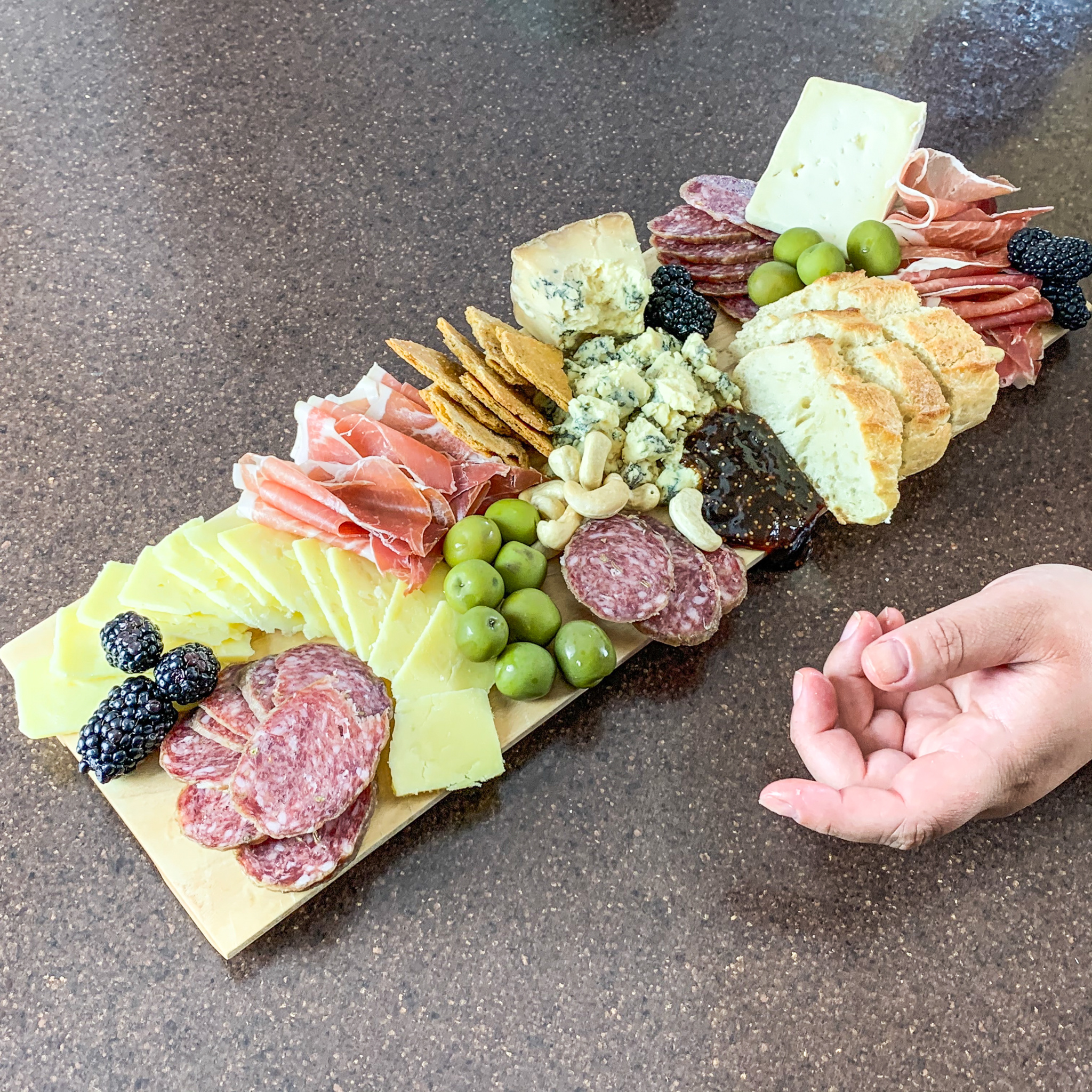
Drizzle honey over part of a pile of olives, let the fig jam commingle with some of the serrano ham.
Give them options of exalted flavors, while allowing them to make the combos that fit their moves.

Remember - we want the board looking bountiful - if some overflows onto the table it only entices the animal feeling of sharing a meal this way.
Utensils Spreaders and Finishing Touches
Finally, choose the spreaders, knives, and spoons you'll need for the board you made. A slicer for hard cheeses; spreaders for soft cheeses, butters, and jams; a spoon for honey; and a fork for olives or pickles.
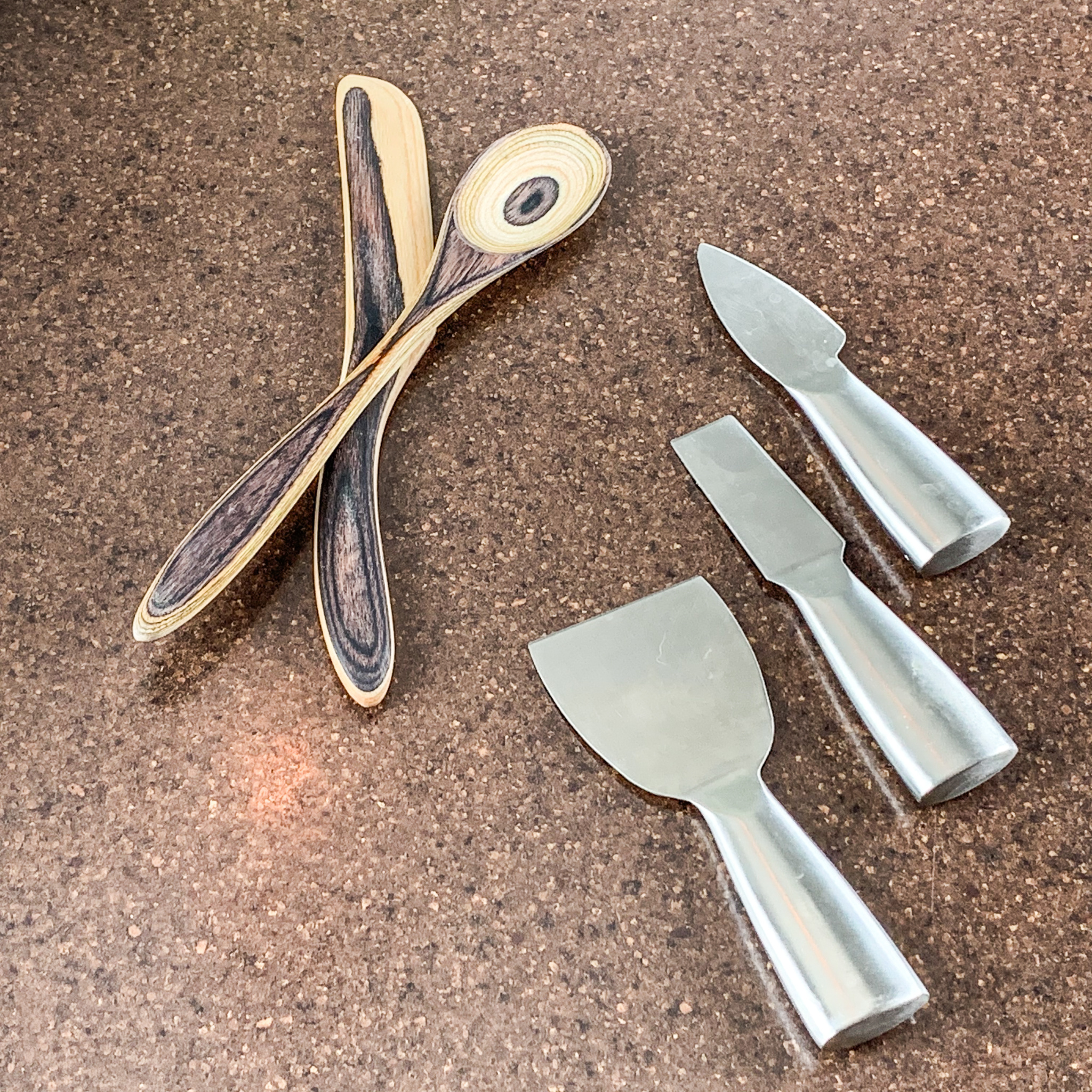
These wooden utensils from Island Bamboo can be found in the store. They are perfect for honey and brie. Shop Island Bamboo
Throw in some herbs from your garden for a visual stunner.
Admire what you created, and fill in with any extra ingredients still lying around.
Eat up with Friends
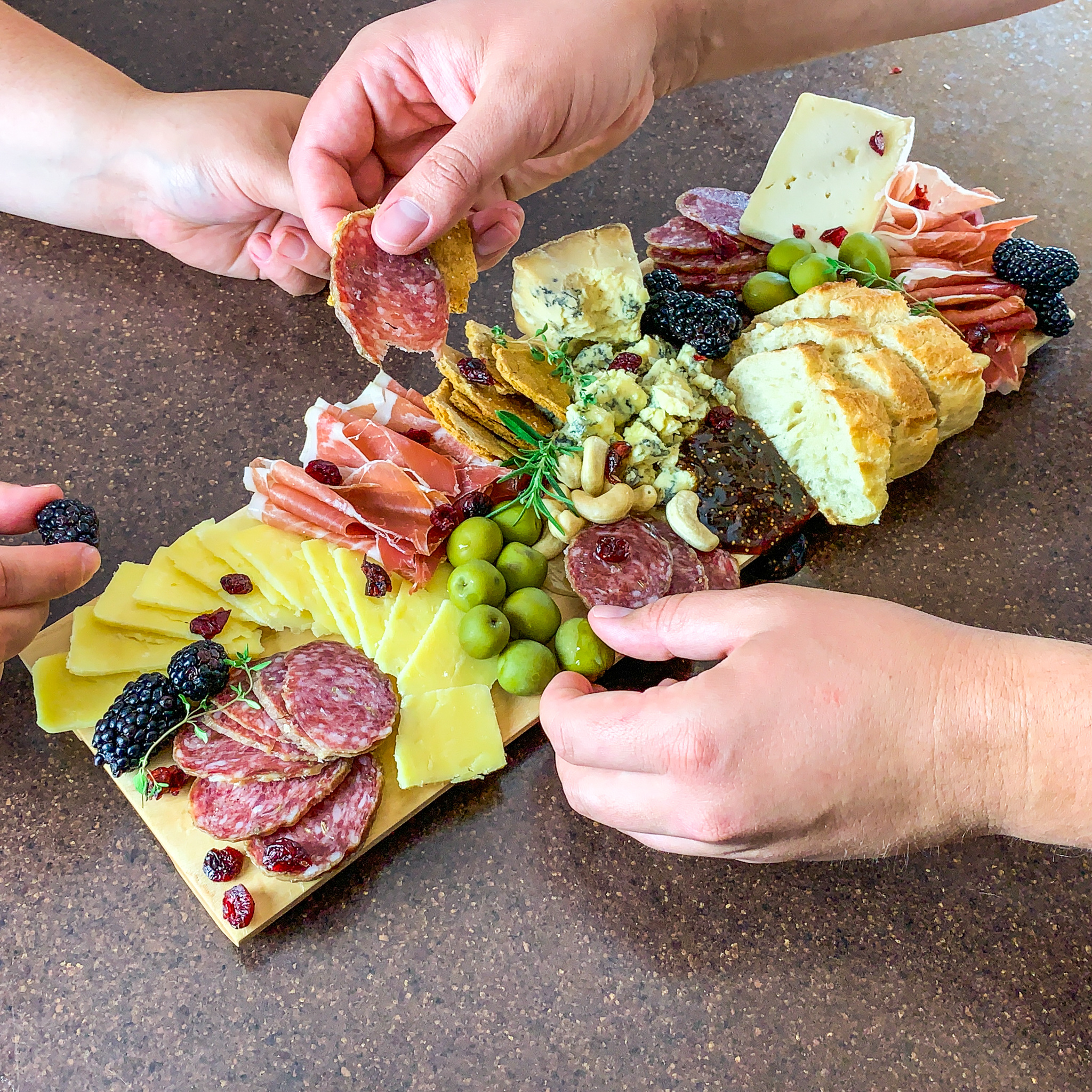
Thanks for Reading!

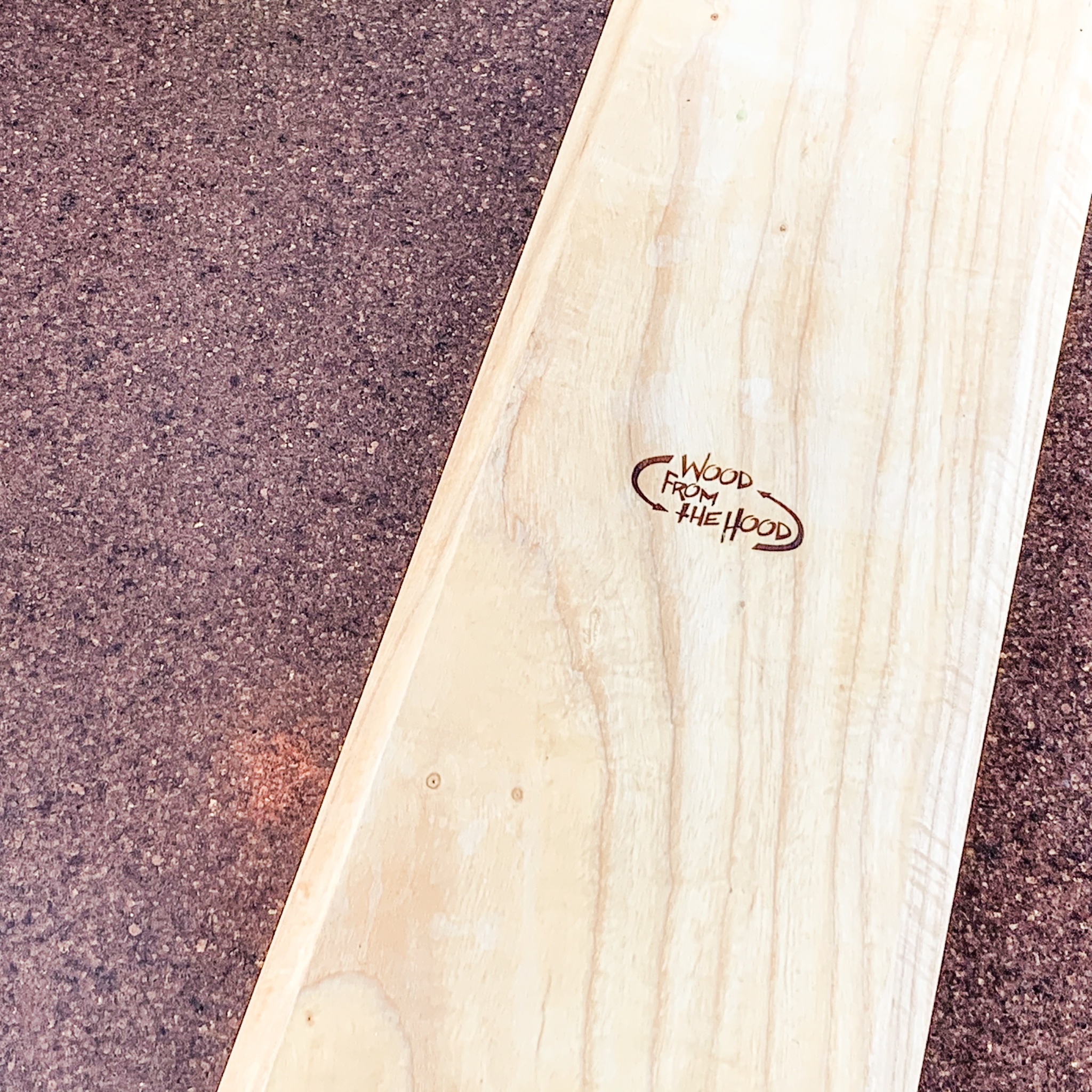


Comments
Be the first to comment...